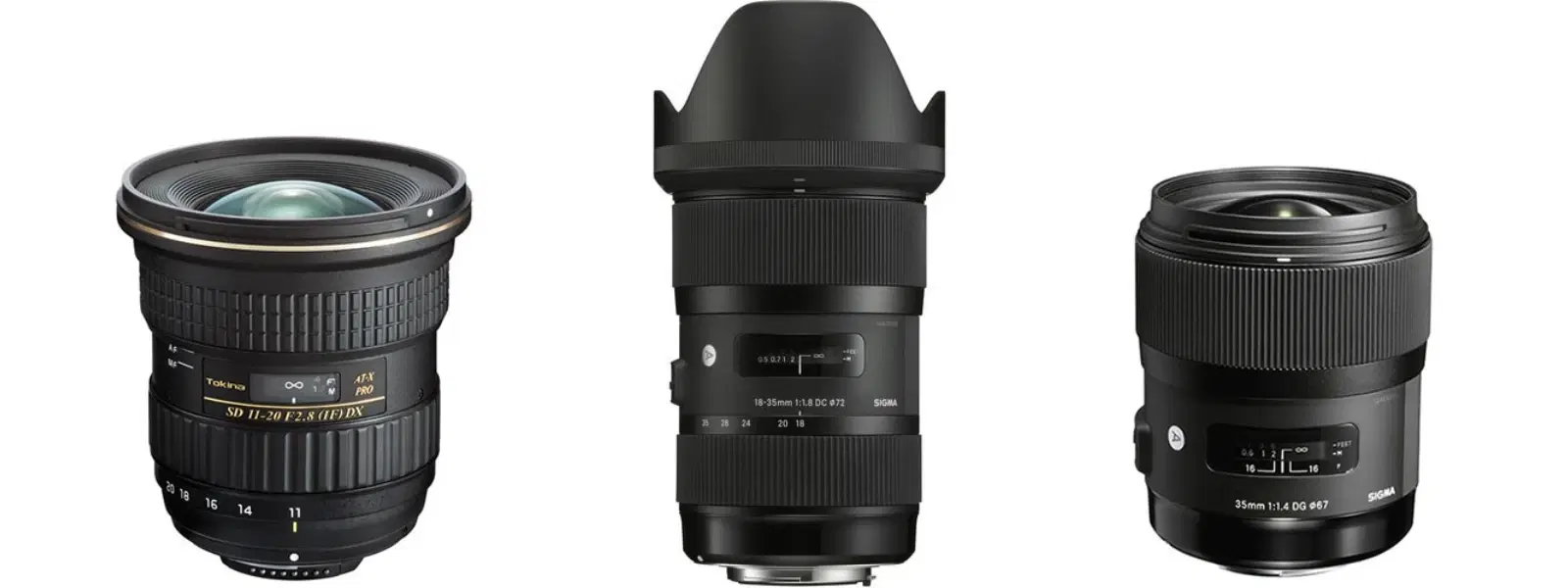
Consumer Electronics
•04 min read
Astrophotography lets you capture the breathtaking beauty of the cosmos, but without the right lens, your images may fall short of their full potential. Selecting an astrophotography lens is more than just choosing a piece of equipment; it's about ensuring that every star, nebula, and glimmer in the Milky Way is represented in breathtaking clarity, even in low-light conditions. This guide will walk you through the essential considerations, from lens types and key features to expert tips and recommendations designed to elevate your stargazing experience. When shopping for your astrophotography lens on Tata Neu, you not only choose top-quality gear but also earn NeuCoins rewards, enjoy express delivery for orders placed before 6 PM, and benefit from unmatched after-sales support.
The lens is the gateway to capturing faint details of the night sky. Unlike standard photography lenses, an astrophotography lens is crucial in gathering light that is scarce in expansive, dark environments. With a keen focus on sharpness and clarity, these lenses bring out details that define celestial wonders, making them indispensable for anyone serious about stargazing.
Among the most important characteristics for astrophotography is a fast aperture, typically ranging between f/1.4 and f/2.8. Such apertures allow more light to hit the sensor, making them ideal for low-light conditions. Industry experts recommend these fast apertures due to their ability to enhance image quality in dark environments. Equally vital is the lens's focal length; wide-angle lenses are excellent for capturing expansive night skies, whereas telephoto lenses are suited for closer, detailed shots of heavenly bodies. Additionally, ensuring that the lens offers superior control of chromatic aberration and maintains image sharpness can significantly impact your final images.
Wide-angle lenses are popular because they capture large portions of the sky, offering a grander view of constellations and the Milky Way. They bring an immersive experience by encompassing more of the night canvas in a single shot. These lenses are often recommended for those embarking on their astrophotography journey, as they effectively capture the vastness of the universe.
Telephoto lenses are perfect for shooting distant celestial objects like planets and the moon. Their design allows for detailed close-ups, making them ideal when the focus shifts from capturing a panoramic sky to highlighting an isolated star or planet. The intricacies of these lenses enable photographers to capture the subtle details that might otherwise be lost in vast distances.
When it comes to lens choice, prime lenses and zoom lenses each offer distinct advantages. Prime lenses, with their fixed focal lengths, generally deliver superior image quality and faster apertures but offer less flexibility. In contrast, zoom lenses provide variable focal lengths, allowing a versatile approach to framing your shot. Depending on your budget and experience, each option has appealing qualities tailored to different needs and skill levels.
Lens performance often comes at a varied cost, and it is important to balance your budget with your desired technical performance. Those just starting might opt for lens models that offer essential features without compromising image quality, while enthusiasts with a higher budget might choose professional-grade lenses for a refined astrophotography experience. Tata Neu offers a curated selection of astrophotography lenses from trusted global brands, ensuring you receive both quality and service excellence.
Choosing a lens that works seamlessly with your camera is key. Whether you use Nikon, Canon, Sony, or another brand, ensure the lens you select is compatible. This will ensure not only optimal performance but also a more satisfying experience as you capture celestial scenes.
Before finalising your purchase, it is highly recommended to dive into detailed lens reviews and consider testing in real-world night photography scenarios. Customer experiences and expert insights can help validate whether a particular lens meets your specific needs in low-light conditions.
For Milky Way photography, a fast aperture lens is often favoured, as it enables you to collect as much light as possible. Those pursuing low-light photography may find prime lenses for night photography more to their taste due to their exceptional clarity and speed. Beginners might benefit from an all-around astro lens that balances performance with accessibility, whereas enthusiasts looking for further detail in some shots might consider a telephoto lens for astrophotography.
Practice and patience are essential in astrophotography. Experiment with your settings, such as aperture, ISO, and shutter speed, to discover what brings out the best in your equipment. Reducing light pollution and using supportive gear like sturdy tripods and star trackers can significantly enhance your results. Explore and adjust your setup, keeping in mind that optimal images often require a combination of the right lens and sound techniques.
Pro Tip: “Fast Apertures Make All the Difference”
Did you know that a lens with a fast aperture, such as f/1.4 or f/2.8, is essential for astrophotography? These apertures allow more light to enter, making it easier to capture vibrant stars and the Milky Way even in the darkest conditions.
A lens with a fast aperture (e.g., f/2.8 or wider) and an appropriate focal length, whether wide-angle for capturing vast skies or telephoto for detailed planetary shots, is ideal.
Both lenses offer excellent results; 14mm is better suited for capturing expansive sections of the sky, while 24mm can provide more detail with slightly less distortion.
A wide-angle lens featuring a fast aperture, such as one rated at f/2.8, is typically considered the minimum requirement to achieve clear and vibrant astrophotography images.
When choosing a lens, focus on aperture size, focal length, compatibility with your camera system, and your desired astrophotography goals—be it the Milky Way, planets, or wide sky exposures.
Choosing the perfect astrophotography lens is a crucial step in capturing stunning images of the cosmos. By understanding the various lens types, key features, and ensuring compatibility with your camera system, you can make an informed decision that enhances your astrophotography journey. With thoughtful research and well-considered investments, you pave the way for consistently impressive captures that reflect your passion and dedication to exploring the universe.